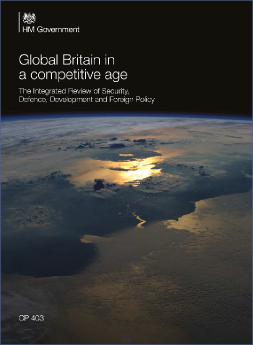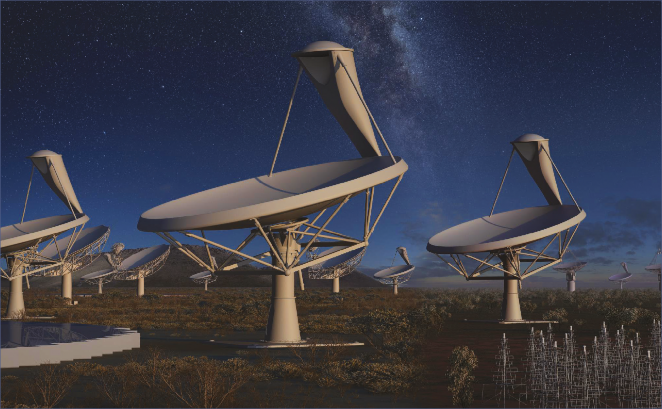FST JOURNAL
UK-China R&D Collaboration
DOI: https://www.doi.org/10.53289/BUEC7760
Building on a relationship of mutual respect and trust
Christopher Smith

Professor Christopher Smith is Executive Chair of the Arts and Humanities Research Council and UKRI International Champion. From 2009-2017, he was Director of the British School at Rome, the UK’s leading humanities and creative arts research institute overseas. From 2017 to 2020 he held a Leverhulme Trust Major Research Fellowship on The Roman Kings: A Study in Power and held visiting positions in Erfurt, Princeton, Otago, Pavia, Milan, Siena, Aarhus and Paris Panthéon-Sorbonne.
China's research and innovation landscape has grown enormously over the past 40 years and it is now the second biggest spender on R&D, with a year-on-year expenditure increase averaging 11.8% over the past five years. Total public and private science and technology expenditures in 2020 amounted to RMB 2.43 trillion (£276 billion) and 2.4% of GDP. China has a large and rapidly growing research base with 2.11 million researchers which is close to 25% of the world's R&D workforce.
China's rising global importance means it is becoming more important to work with, not less, even with the challenges that come from managing such enormous and accelerating partnerships. Even my own subject of Ancient History and Classics is now well represented in Chinese universities.
We enjoy a strong relationship with China on science and technology. The Integrated Review, a critical document for the UK, supports the position of continuing engagement with China around global challenges. In 2020, the UK became China's second largest partner in joint publications after the US. Joint papers received higher field-weighted citation indices than papers written separately for both countries. Our joint collaborative research output has more than doubled over 2016-2020.

Underpinning all of these statistics is a powerful set of collaborative relationships that are built on mutual respect and trust between universities and individual researchers in both countries. Behind this relationship is the long history of partnership with China's best researchers as well as some structural features. The UK-China Joint Strategy for Science, Technology and Innovation Cooperation was signed in 2017. There is an annual flagship challenge, where the UK and China agree to enhance levels of cooperation in a specific area and each flagship challenge lasts for about three years.
A UKRI team, based in the British Embassy in Beijing, leads relationships with China's funding agencies, facilitates the delivery of joint programmes, measures the impact of collaborations and provides a voice for UK excellence in the world's most dynamic R&D landscape. We also work with Chinese partners through a full range of multilateral international initiatives, such as CERN, the Square Kilometre Array, the Antarctic Survey and so on. This means that there is a very rich infrastructure underneath the research and innovation partnerships.

What impact does it have, though? UKRI-funded research has led to a China-wide ban on Colistin, an animal growth promoter, in order to reduce the chance of antibiotic resistance developing. This is part of a global health initiative. Collaboration between China’s Oxford Suzhou Centre for Advanced Research (OSCAR) and Oxford University, funded by UKRI in part, delivered Covid testing kits that work in as little as 15 minutes. New carbon capture technology, incorporated into China's existing and planned energy infrastructure, reduces the energy requirements for CO2 capture by 25-30%, delivering the goals set out in COP26. A novel battery technology is leading to the development of new fleet of hybrid buses in UK and advanced charging facilities in China. World-class expertise has been established through joint centres, such as the Centre of Excellence for Plant and Microbial Sciences, funded by BBSRC and the Chinese Academy of Sciences. All of this is both about research and about innovation, and about the combination of the two – upstream research and downstream application – for the economic benefit of society.
We do all this through the lens of trusted research. Now, there may be particular reasons to focus on trusted research and integrity in some partnerships, but it must exist in all partnerships because that is the only way to protect our researchers, their work and to ensure that it is used properly. There is significant appetite for us to continue and develop these collaborations. We will be looking to build fundamental discovery-driven research between UK and China where we can together work on critical global challenges such as health and decarbonisation, alongside other across the world.
We talk about this as if it is new. While there are particular issues at this moment in time, the relationship between the UK and China is long-standing. And the nature of our common humanity is immensely deep and is the fundamental quality upon which everything is built. I recently acquired a wonderful translation of Chinese poetry from the Tang Dynasty, the second half of the first millennium AD. It is called In the Same Light (translator Wong May and published by Carcanet). These poems talk about exiles, people troubled by war, people losing their homes, people falling in love, people losing loved ones, people finding peace and tranquillity in relationships with each other, and looking to the future: all written over 1,000 years ago.
These are emotions and relationships which are deep between us and on which we can build. Through the arts, humanities, science and innovation, we can build a relationship which will make us stronger together.
